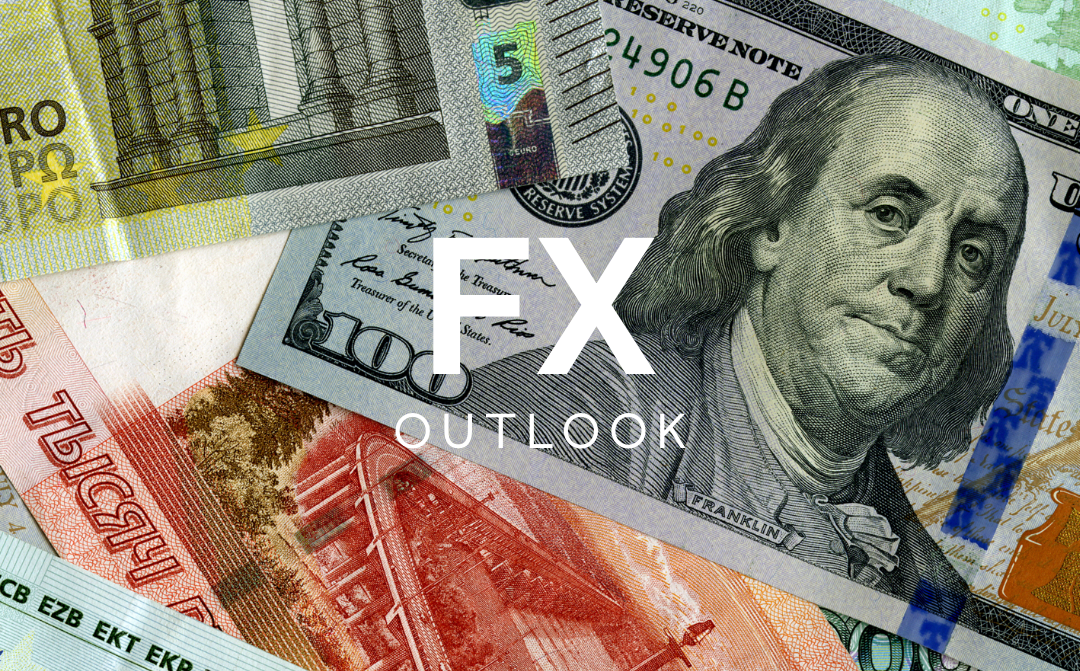4 Dec FX outlook – USD, EUR, GBP, CAD, AUD, NZD

Table of Content
USD
The US dollar’s situation did not improve this week, as further pressure was applied to the currency due to increased anticipation that the Federal Reserve could begin cutting interest rates as early as March 2024. Other assets took advantage of the dollar’s weakness, particularly the New Zealand dollar, which had benefited from the RBNZ’s hawkish rate pause, sending NZDUSD to a 5-month high of 0.6200. One area of strength for the dollar came against the euro, with a sharp decline in eurozone inflation (2.4%) helping to drive EURUSD into the lowest levels since mid-November. This is particularly notable for the dollar index, with that basket weighted heavily towards EURUSD.
From an economic standpoint, last week saw plenty of data to provide an idea of the health of the US as we commended the final month of 2023. The November US Consumer Confidence Index jumped to 102.0, up from 99.2 in October. Furthermore, the quarterly GDP report showed that the US economy grew faster than expected in the third quarter (5.2% versus 4.9%). The Fed will have paid close attention to the latest core PCE price index gauge, with this preferred inflation figure falling on both a monthly (0.2% vs 0.3%) and annual basis (3.5% from 3.7%). Finally, the US economy showed signs of concerns as unemployment claims rose (218k vs 211K) and the ISM manufacturing PMI remained in contraction territory (56.7). However, it was commentary from the likes of Fed’s Waller and Powell that really moved the dial, with both taking on a notably more dovish tone with regards to forthcoming interest rate cuts.
The USD, already weighed down by disinflationary developments, will face a new round of economic data this week, with the jobs report taking centre stage. Last month’s surprisingly low payrolls figure of 150k provides the ground for a potential rebound this time around. A failure to do so would ring alarm bells over the health of the US jobs market. The US dollar will also be highly sensitive to the average hourly earning element of the report, with this wage figure providing a key signal of underlying inflation pressures.
EUR
The euro was the worst-performing currency for the week, with a sharp decline in eurozone inflation helping to drive the currency sharply lower. Particular weakness came via the likes of EURNZD and EURAUD, as risk-on sentiment served to benefit these commodity currencies.
Initially bolstered by ECB President Christine Lagarde’s hawkish comments, the EUR gave up its advance when German CPI (3.2% from 3.8%) and Spanish CPI (3.2% vs 3.5%) fell short of forecasts. However, it was the wider eurozone release that confirmed the substantial disinflation being seen in the region, with headline CPI down to 2.4%, while the core reading dropped from 4.2% to 3.6%. This had obvious implications for expectations around a potential rate cut from the ECB, with headline inflation now just 0.4% away from the 2% target.
Moving on, top-tier data for the EUR will be less forthcoming in the week ahead. Instead, we see a number of tier-two figures reported over the course of the week. That includes services PMI revisions (Tuesday), retail sales (Wednesday), and a third quarter GDP revision on Thursday. Nonetheless, the recent decline eurozone inflation will remain a key driver of sentiment, with any perceived widening or tightening of the gap between eurozone inflation and that of another country helping to drive sentiment going forward.
GBP
The pound found itself on the back foot last week, although those losses were predominantly focused on the final days of the week. Coming within a wider bullish trend for the pound, last week instead saw GBP take its foot off the gas for the time being. Sterling weakness predominantly came against the likes of the AUD, NZD, and CAD, with commodity currencies enjoying a relatively upbeat week. However, sterling did fare better against those currencies closer to home, with the euro and US dollar both losing ground as risk attitudes shifted in the wake of the latest eurozone inflation decline.
In terms of macro drivers, last week had precious few notable economic data releases to move the pound. The BRC shop price index did provide one proxy for consumer inflation, with this monthly gauge seeing the year-on-year rate of price gains fall back to a 17-month low of 4.3%. We also saw commentary from Bank of England Governor Andrew Bailey, who warned that despite global discussions over the potential for impending rate cuts at the Fed and ECB, the BoE are not in a place to have those conversations. While the bank will welcome the recent decline in UK CPI to 4.6%, the 2% target remains some way off for the time being.
Looking ahead, we see a similarly quiet economic calendar in the UK, with Wednesday’s construction PMI figure representing the most notable data point to watch out for. Coming off the back of two concerning figures of 45.6 (October) and 45.0 (September), there is a hope that we will see this gauge reverse higher after recent declines. Wednesday also sees the Bank of England release their bi-annual financial stability report, providing insight into the perceived strength potential risks within the economy. That will be accompanied by an appearance from Andrew Bailey, although he is unlikely to shift the tone much following last week’s comments.
CAD
Last week saw a somewhat changeable period for the Canadian dollar, which ended the week on a positive footing after suffering declines through Tuesday and Wednesday. The OPEC decision to increase their production cuts had been expected to lift the Canadian dollar on a stronger energy price environment. However, a somewhat sceptical response saw crude fall back to Monday’s lows by the end of the week. With the CAD largely in the middle of the pack last week, with enjoyed gains against the US dollar, and the European currencies (EUR and GBP). However, Things were less positive against fellow commodity currencies AUD and NZD, which both gained ground against the Loonie.
Concerns about Canadian growth remain after another underwhelming monthly GDP release of 0.1%. This comes after two months of stagnation, pushing the Bank of Canada towards a swift return to easing next year. However, things looked more positive on the jobs front, with the employment change figure coming in above expectations with a reading of 24.9k. However, the unemployment rate in November was slightly higher than before, at 5.8%. While the economy appears to be well within soft landing territory, markets currently look for the BoC to start cutting rates as early as March.
With that in mind, investors will keep a close eye on the Bank of Canada’s interest rate decision due on Wednesday. It is expected that the figures will remain unchanged at 5.00%, with the central bank’s forward guidance likely to be the main cause of CAD volatility. If the BoC takes a cautious approach to its future policy path, it will likely negatively impact the CAD. Conversely, if the bank maintains its hawkish narrative on inflation, the CAD may continue to dominate other assets in the new week.
AUD
The Australian dollar experienced a somewhat choppy week just gone, with mid-week losses interrupting an otherwise positive week for the commodity currency. From a wider perspective, the Aussie dollar has enjoyed plenty of upside over recent weeks, as risk-on sentiment benefits pro-cyclical currencies over the likes of the dollar. Particular gains were seen against the likes of the euro, pound, and US dollar, as a sharp decline in eurozone inflation helped lift calls for a swift return to monetary easing next year.
Last week saw Australian inflation data dominate proceedings, with AUD temporarily losing ground in the wake of a surprise decline in the October CPI reading. The 4.9% figure came in well below estimates, signalling a quicker disinflationary pathway than previously anticipated. Nonetheless, the eurozone figure of 2.4% does highlight the fact that Australian inflation remains relatively elevated as things stand. Meanwhile, comments from RBA’s Bullock saw her warn that businesses still enjoy sufficient demand to be able to pass on wage increases without losing earnings. With unemployment remaining low, the RBA appears to be happy keeping rates steady for the time being.
Looking ahead, the RBA monetary policy decision dominates, with the widespread expectation of a rate pause signalling a particular focus on the accompanying comments. Last weeks inflation decline helped shift market expectations away from the previous view that the RBA will raise rates once again in Q1. Bullock should shed further light on whether that is justified, with markets looking for clues on the potential timing of the first rate cut. Also keep an eye out for the latest Australian GDP report on Tuesday evening, with third-quarter growth expected to come in at 0.4%
NZD
The New Zealand dollar enjoyed a remarkably consistent week of gains, with the currency finding itself at the top of the pack compared with the other major currencies covered here. The strength of AUDNZD highlighted the regional strength against a currency that is highly correlated to the Kiwi dollar. Elsewhere, weak inflation data out of the eurozone helped drive EURNZD lower.
Particular NZD volatility came around the release of the RBNZ rate decision on Tuesday evening, with the bank taking a somewhat hawkish tone in the wake of a widely anticipated rate hold. The bank’s insistence that inflation remains too high is particularly notable for a country that provides little by way of data on the inflation front. The quarterly inflation release means that the last time we saw CPI released, it was a third quarter figure of 5.6%. With NZD traders eagerly awaiting the fourth quarter release in January, comments from the RBNZ are held in high regard as a gauge over how quickly they are seeing prices return to target.
Looking ahead, this week sees little by way of big data, with Tuesday’s GDT dairy price release providing one figure of note. Released every two-weeks, this key export pricing data rose back to the 0% level last time around. A push higher could help elevate the Kiwi dollar. Aside from this, NZD will likely feed off risk attitudes, with the currency expected to enjoy further gains in the event of additional gains in the equity market.
Disclaimer: This material is a marketing communication and shall not in any case be construed as an investment advice, investment recommendation or presentation of an investment strategy. The marketing communication is prepared without taking into consideration the individual investors personal circumstances, investment experience or current financial situation. Any information contained therein in regardsto past performance or future forecasts does not constitute a reliable indicator of future performance, as circumstances may change over time. Scope Markets shall not accept any responsibility for any losses of investors due to the use and the content of the abovementioned information. Please note that forex trading and trading in other leveraged products involves a significant level of risk and is not suitable for all investors.







